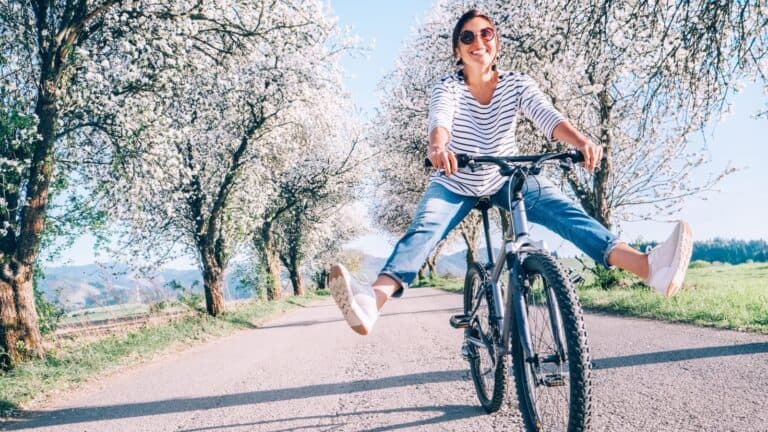Gender Identity, Gender Expression, Sexuality? How To Keep It All Straight.
Gender identity is a profoundly personal aspect of self, encompassing a diverse range of experiences and expressions that extend beyond traditional definitions. While some individuals identify within the binary of male or female, many others find themselves outside or between these categories. Here are some of the most commonly recognized gender identities within the binary and non-binary spectrums.
Binary Genders

Binary genders are those that align with the traditional understanding of male and female:
– Male: Identifies with the male gender, typically associated with masculinity.
– Female: Identifies with the female gender, typically associated with femininity.
Non-Binary Genders

Non-binary genders encompass a range of identities that do not fit strictly within the male or female categories. Some common non-binary identities include:
– Genderqueer: A broad identity that may include a blend of male and female, a separate gender altogether, or no gender.
– Genderfluid: This identity can change over time. A genderfluid person might feel more male on some days and more female on others or may feel like a different gender altogether.
– Agender: Refers to individuals who do not identify with any gender at all.
More Genders

– Bigender: Individuals who experience two gender identities, either simultaneously or varying between them. These can be male and female but might also include other non-binary identities.
– Demiboy: Someone who partially identifies with being male, regardless of their assigned gender at birth. They might feel only partly connected to being male.
– Demigirl: Similarly, this refers to someone who partially identifies with being female. They might not fully connect with being female.
– Androgynous: Often used to describe a person who has a physical appearance or gender expression that is not distinctly male or female.
Other Recognized Genders

In addition to these more widely recognized categories, there are culturally specific genders and newer terms that people might use to describe their gender identity:
– Two-Spirit: A term used by some Indigenous North American cultures to describe a person who embodies qualities traditionally associated with both males and females.
– Hijra: In South Asia, particularly in India and Pakistan, Hijra are officially recognized as a third gender, often encompassing eunuchs, intersex people, and transgender individuals.
– Fa’afafine: In Samoa, Fa’afafine are people who are assigned male at birth, but embody both masculine and feminine gender traits.
These identities are just a few examples within the vast spectrum of gender identities. It’s important to recognize that language and understanding of gender are constantly evolving, and new terms may emerge as communities better understand and articulate their experiences.
What Is The Difference Between Gender And Sexuality

Gender and sexuality are distinct but related concepts that play significant roles in an individual’s identity. Understanding the difference between them is crucial for recognizing the diversity of human experiences.
Gender

Gender refers to the roles, behaviors, activities, expectations, and societal norms that cultures and societies consider appropriate for men, women, and gender-diverse people. It is often seen in contrast to the biological concept of sex, which is based on physical characteristics such as chromosomes, hormone levels, and genitalia. Gender identity is about one’s internal understanding and personal sense of being male, female, a blend of both, neither, or anywhere along the gender spectrum. Key points about gender include:
– Social and Cultural Construct: Gender roles and expectations vary significantly across different cultures and historical periods.
– Gender Identity: This is how individuals perceive themselves and what they call themselves, which can be male, female, both, neither, or anywhere along the gender spectrum.
– Gender Expression: How an individual expresses their gender identity through clothing, behavior, and personal appearance.
Difference between Gender Identity and Gender Expression

Gender identity and gender expression are two distinct aspects of a person’s gender that are often misunderstood or conflated. Gender identity refers to a person’s internal sense of being male, female, or something else along the gender spectrum. It is about who you are, your basic understanding of yourself as a man or woman (or both/other/etc). Gender identity is not the same as biological sex, which refers to a person’s anatomy, physical attributes such as external sex organs, sex chromosomes, and internal reproductive structures.
Gender Expression Explained

On the other hand, gender expression is how a person publicly presents their gender. This can include behavior and outward appearance such as dress, hair, make-up, body language, and voice. A person’s chosen name and pronoun are also common ways of expressing gender. Others perceive a person’s gender through these attributes. Gender expression is how you express yourself, often through clothes, hair styles, make-up, jewelry, language (pronouns and other gendered terms), even some behaviors. It is the way that you communicate your relationship to gender through clothing, makeup, jewelry, mannerisms, and so on.
Sexuality

Sexuality, or sexual orientation, refers to the pattern of emotional, romantic, or sexual attraction that one feels towards others. It is about who an individual is attracted to and desires to have relationships with. Unlike gender, which is about personal identity, sexuality is about one’s feelings towards others. Key aspects of sexuality include:
– Attraction: This can be physical, emotional, romantic, or a combination of these, directed towards people of the same gender, different genders, all genders, or no one (as in the case of asexuality).
– Fluidity: For some people, sexual orientation can change over time.
– Diverse Orientations: Includes heterosexuality (attraction to a different gender), homosexuality (attraction to the same gender), bisexuality (attraction to two or more genders), pansexuality (attraction regardless of gender), asexuality (little to no sexual attraction to anyone), and more.
Key Differences

– Focus: Gender is about one’s own identity and role within society, while sexuality is about one’s attraction to others.
– Expression vs. Attraction: Gender involves expression and identity (how you see yourself and how you present yourself to the world), whereas sexuality is about who you are attracted to.
– Cultural and Social Aspects: Both gender and sexuality are influenced by cultural, social, and individual factors, but they manifest in different aspects of a person’s life and identity.
The Takeaway

While gender and sexuality are interconnected in how they shape an individual’s identity and experiences, they address different aspects of a person’s life: gender is about who you are, and sexuality is about who you are attracted to. Gender expression is about how you present yourself to the world. These aspects of a person’s gender are separate and distinct, and a person’s gender identity does not determine their gender expression, and vice versa.
The 20 Best Countries For Transgender People Who Want To Leave The U.S.

In 2023, state legislatures proposed 566 anti-trans bills in 49 states (all but Delaware), and legislators also introduced at least 31 national anti-trans bills. Eighty-five of those bills were signed into law, revoking rights from transgender individuals in 25 states.
If you’re considering moving your family to a country that’s more welcoming to transgender people, travel journalists Asher & Lyric have created a guide to the best and worst countries for trans rights and ranked the United States in 40th place. Here are their 20 best countries for transgender people.
Read: The 20 Best Countries For Transgender People Who Want To Leave The U.S.
Best Cities For Lesbian Expats

With anti-queer rhetoric ramping up across the U.S., LGBTQ+ folks of all stripes are looking to leave for new homes where they can live loud and proud (or cozy and quiet, if that’s what they prefer). Here are the best cities for lesbian expats looking to move abroad.
READ: Best Cities For Lesbian Expats
Join Us

Join us on this empowering journey as we explore, celebrate, and elevate “her story.” The Queen Zone is not just a platform; it’s a community where women from all walks of life can come together, share their experiences, and inspire one another. Welcome to a space where the female experience takes center stage. Sign up for our newsletter so you don’t miss a thing, Queen!







